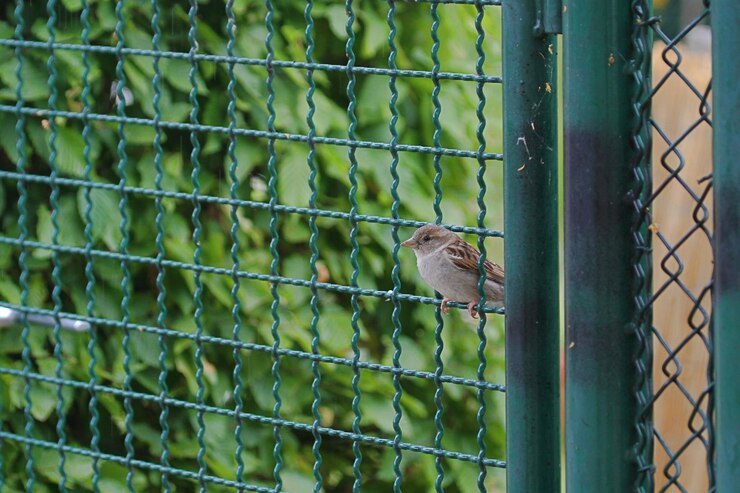Introduction
Birds, particularly pigeons, are common in urban areas. While they may appear harmless, they often create significant issues when they start nesting in hard-to-reach spaces like duct areas. These narrow, concealed zones—often present between buildings or within ventilation systems—are prime targets for birds looking for shelter. The solution? Duct area bird and pigeon nets.
Designed to offer protection without harming birds, these nets are a simple yet effective way to prevent health risks, property damage, and hygiene issues caused by bird infestation. Whether it’s a residential building, commercial property, or industrial setup, installing duct area bird nets is essential for long-term cleanliness and safety.
What Are Duct Area Bird & Pigeon Nets?
Duct area bird nets are specialized mesh installations used to block birds from entering and nesting in vertical or horizontal duct spaces. These areas, often inaccessible without proper tools or safety gear, become ideal hiding and nesting spots for pigeons and other urban birds.
The nets are typically made from high-quality UV-stabilized nylon or HDPE (High-Density Polyethylene). They are designed to withstand outdoor conditions like sun, wind, rain, and dust without losing strength or flexibility.
Why Are Bird Nets Necessary in Duct Areas?
1. Prevent Nesting and Breeding
Ducts provide shelter, warmth, and safety for birds. Once they find a nesting spot, they return regularly to breed, leading to rapid population growth and even more serious problems over time.
2. Avoid Foul Smells and Diseases
Bird droppings in duct areas can go unnoticed for months, creating unpleasant odors and acting as breeding grounds for parasites and diseases like salmonella, histoplasmosis, and E. coli.
3. Protect Ventilation and HVAC Systems
In commercial buildings and apartments, duct areas often house air conditioning or ventilation units. Bird nests and feathers can block air vents, reduce airflow, and increase energy consumption. In worst cases, they can damage equipment or even lead to fire hazards.
4. Maintain Hygiene and Aesthetic Appeal
Bird infestations result in stains, foul smells, scattered feathers, and droppings that drip down building exteriors. Installing bird nets helps maintain cleanliness and visual appeal, especially in high-rise apartments and office complexes.
Key Features of Duct Area Bird & Pigeon Nets
- High Durability: Made from UV-treated materials that resist sunlight, rain, and temperature changes.
- Fine Mesh Design: Prevents even small birds from entering while allowing proper air circulation.
- Corrosion-Free Anchoring: Mounted with stainless steel hooks and clamps that resist rust and corrosion.
- Custom Fit Installation: Nets are tailored to the unique dimensions and layouts of duct openings.
- Non-Invasive Appearance: Available in transparent or black color options that blend with building aesthetics.
- Eco-Friendly: A humane way to deter birds without harming them.
Applications of Bird Netting in Duct Areas
- Residential Apartments: Especially in multi-storey buildings where duct spaces are difficult to access.
- Hotels and Hospitals: Where hygiene and cleanliness are critical for reputation and safety.
- Shopping Malls and Offices: To prevent bird interference in utility and air conditioning ducts.
- Factories and Warehouses: Where birds can interfere with ventilation or storage safety.
- Educational Institutions: Keeps premises clean and prevents distraction or contamination.
Installation Process
1. Site Inspection
Trained professionals visit the premises to assess duct size, accessibility, and bird activity.
2. Measurement and Planning
Precise measurements are taken, and the most suitable net type is selected based on requirements.
3. Anchor Point Setup
Stainless steel hooks, anchors, and corner clamps are fixed securely around the duct opening.
4. Net Installation
The bird net is tightly stretched and secured to prevent gaps or loose ends. Safety gear is used for high-rise areas.
5. Final Testing
A final check is done to ensure the net is firm, aesthetically neat, and allows no space for birds to enter.
Benefits of Installing Duct Area Bird Nets
Long-Term Protection
Once installed, nets can last 3–5 years or more with minimal maintenance.
Cost-Effective
Prevents expensive damage to air ducts, paintwork, and machinery caused by birds.
Safe and Humane
No need for harmful repellents or traps. Nets allow birds to move freely elsewhere without harm.
Improved Airflow
Keeps air ducts clear and ensures optimal performance of ventilation systems.
Customizable and Scalable
Solutions available for both small residential ducts and large industrial ventilation systems.
Maintenance Tips
- Clean the nets with water every few months to remove dust or droppings.
- Inspect for any tears or sagging during routine building maintenance.
- Replace damaged sections promptly to maintain effectiveness.
- Avoid cutting or tampering with the net after installation.
Conclusion
Duct area bird and pigeon nets are a smart, affordable, and long-lasting solution to one of the most overlooked urban problems—bird infestation in utility spaces. Not only do they protect property and maintain hygiene, but they also offer a safe and eco-conscious way to coexist with urban wildlife.
Whether you’re a building manager, homeowner, or facility supervisor, investing in high-quality bird netting is a small step with big benefits. Secure your ducts today—and enjoy cleaner, safer, and bird-free surroundings.

